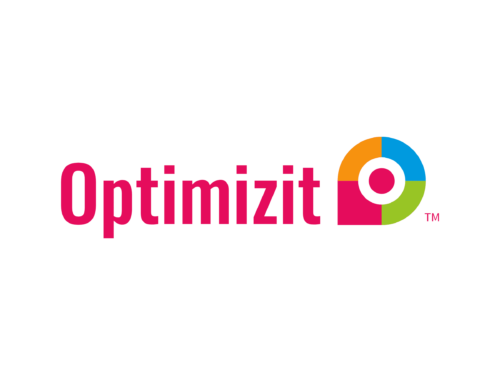The significance of User Experience (UX) in SEO (Search Engine Optimization) is often overlooked, but its impact on search rankings and online visibility can be profound. As search engines increasingly emphasize providing the best possible experience for users, UX becomes a critical component of an effective SEO strategy. As an SEO & Digital Marketing Agency in Indiana, Optimizit is committed to helping our clients understand and improve the interplay between UX and SEO, ensuring the highest level of success in today’s competitive digital landscape.
In this comprehensive guide, we will delve into the importance of UX in SEO, exploring the various elements of user experience that contribute to effective search engine optimization. From website design and navigation to content quality and responsiveness, learn how to harness the power of exceptional UX to enhance your SEO strategy and drive sustainable online growth. Trust the team at Optimizit to guide you through the complexities of UX and SEO, setting your business on a path to digital success.
The Importance of UX (User Experience) in SEO
1. UX’s Direct and Indirect Impact on SEO
A. Improved User Engagement: Google uses various engagement metrics, such as bounce rate, pages per session, and dwell time, as ranking signals. A positive user experience on your website keeps visitors engaged, leading to better engagement metrics and, ultimately, higher search visibility.
B. Mobile-First Indexing: Google’s transition to mobile-first indexing in 2018 emphasizes the importance of mobile UX. Ensuring mobile-friendly design and a seamless mobile experience contributes to higher search rankings.
C. User Satisfaction and Conversions: The end goal of SEO is not just driving traffic but also converting it into meaningful actions, such as making a purchase or signing up for a newsletter. Excellent UX leads to higher user satisfaction and better conversion rates, which ultimately contribute to your online success.
2. Website Design and Navigation
A. Site Structure and Architecture: A well-organized website structure allows users and search engines to easily navigate and understand your content. This may include logical grouping of topics, clear categorization, and an intuitive menu system. Well-structured websites facilitate a better UX and contribute to improved indexation by search engines.
B. Internal Linking: Creating an effective internal linking strategy improves UX by helping users navigate your website and find relevant information. Internal links also facilitate crawlability and indexation, as search engines can discover and understand your content more easily.
C. Consistency in Design: Maintaining consistent design elements (such as layout, typography, and color schemes) throughout your website creates a cohesive and visually appealing experience for users. Consistency in design helps build trust and enhances overall user satisfaction.
3. Content Quality and Presentation
A. Readability and Formatting: Present your content in an easily digestible format by using short paragraphs, engaging headings, bullet points, and numbered lists. This makes it effortless for users to scan and locate the information they are seeking, thus improving their experience on your site.
B. Multimedia Integration: Incorporating images, videos, infographics, and other multimedia elements can enhance the user experience and make your content more engaging. Ensure that these elements are optimized to maintain fast-loading times and are accessible across different devices.
C. Error Reduction: Ensuring the accuracy and relevance of your content, free from grammatical and factual errors, is vital in building user trust. Websites that are well-written and constantly updated with accurate information enjoy increased user engagement, which ultimately supports higher search rankings.
4. Site Speed and Responsiveness
A. Page Loading Times: Slow-loading pages can lead to increased bounce rates, negatively impacting your search rankings. Optimize your website for fast loading times by compressing images, utilizing caching mechanisms, and minimizing the use of scripts and plugins.
B. Responsive Design: Embrace a responsive design that adjusts seamlessly to any device a user may be accessing your website from, including desktops, smartphones, and tablets. A responsive design ensures optimal user experience regardless of the device, contributing to improved search rankings.
C. Optimal Image and Multimedia Loading: Although multimedia elements can enhance UX, they can also slow down page loading times if not optimized. Use appropriate image compression, sizes, and formats, and implement strategies like lazy loading to ensure minimal performance impact while retaining the benefits multimedia provides.
5. Accessibility and Inclusivity: Catering to Diverse User Needs
A. Clear and Understandable Content: Write content in a language and style that caters to a diverse range of users, regardless of their age, education, or cultural background. Using clear, concise language and avoiding industry jargon ensures a comprehensive and enjoyable user experience.
B. WCAG (Web Content Accessibility Guidelines) Compliance: Adhering to WCAG guidelines ensures your website is accessible to users with disabilities, including those who rely on screen readers and assistive technologies. By making your website accessible to all users, you improve the overall user experience, which can positively influence your search performance.
C. Localization and Internationalization: Tailoring your website’s content, theme, and user interface to cater to different geographies and cultures is essential for global businesses. By providing a localized experience relevant to a diverse user base, you improve your website’s UX and increase the chances of higher search visibility in multiple regions.
Investing time and resources in optimizing your website’s user experience can be highly rewarding in terms of improved SEO and overall online success. Excellent UX helps build trust, encourages user engagement, satisfies diverse user needs, and ultimately leads to higher search rankings and increased conversions. By focusing on website design, content quality, site speed, and accessibility, your business can effectively capitalize on the powerful connection between user experience and search engine optimization.
Maximize Your Online Success with Optimizit: User Experience Meets SEO
The depth of connection between UX and SEO cannot be overstated, and optimizing user experience is critical in achieving sustainable search visibility and online success. By implementing best practices in website design, content presentation, site speed, accessibility, and inclusivity, you can offer an exceptional user experience that boosts your search performance.
As a leading SEO & Digital Marketing Agency in Indiana, Optimizit is dedicated to helping our clients unlock the full potential of their websites, weaving together the critical aspects of user experience and search optimization. Our team of experienced professionals will work closely with you to analyze and enhance your website’s UX and SEO, ensuring optimal online performance and a higher return on investment.
Contact Optimizit today to embark on your journey toward exceptional UX and SEO success.

